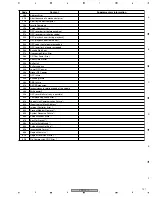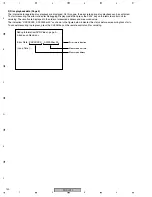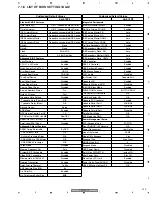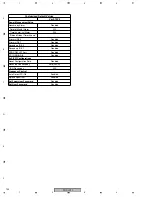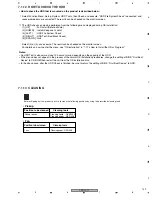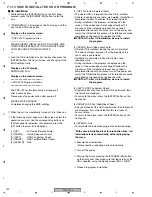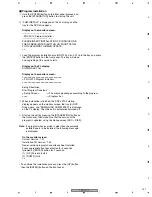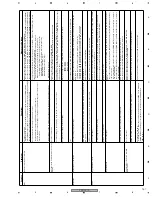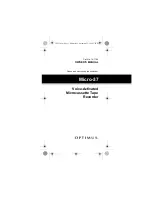
PRV-LX10
146
1
2
3
4
1
2
3
4
C
D
F
A
B
E
7.1.10 CAUTIONS ON HANDLING THE HDD
Reference: Main specifications on damage to the HDD
The HDD is about 10 times as sensitive to shock
during operation than during nonoperation.
During operation
During nonoperation
Shock G
(acceleration)
<approx. 20 G
<approx. 200 G
Temperature
change
< 20
°
C/hour
Moisture change
< 20%/hour
0.5 inch / 1.27 cm
387
217
200
26
1.0 inch / 2.54 cm
595
457
310
37
2.0 inch / 5.08 cm
1133
600
680
70
4.0 inch / 10.16 cm
1795
1040
1050
267
Reference: Estimate value of falling distance vs. shock (G)
when the HDD is dropped without protection
Landing
surface
Falling
distance
Granite
surface
Concrete
floor
Synthetic-resin-
coated table
Antistatic
sponge
(1) Cautions on Handling the HDD
• The HDD is very sensitive to shocks and vibrations. Care must be taken especially during operation (when the power is on).
• The HDD is very sensitive to electrostatic charges.
• Rapid change in temperature or humidity may cause deterioration of the HDD.
Note: After receiving damage caused by any above-mentioned factors, the HDD may operate normally for dozens or some hundreds of
hours but then suddenly crash. If you are certain you have damaged a new repair part (HDD) while making repairs, do not use the
part.
(2) Cautions on handling the product on which the HDD is mounted or the HDD as a repair part, and
examples of dangerous handling
[Cautions on handling the product on which the HDD is mounted]
• While the unit is turned on, the HDD is always in operation. Be sure NOT to impart shock to the unit.
÷
Examples of dangerous handling: while the power is on
• Bumping on the bonnet
• Dropping an object, such as a small screwdriver or remote control unit, onto the bonnet, or bumping an object against the cabinet
• Moving the unit by dragging
• Stacking another product on the unit
Note: Be sure NOT to impart shock, such as bumping or hitting a screwdriver against the HDD, during diagnosis with the bonnet open.
÷
Examples of dangerous handling: while the power is off
• Imparting strong shock, although the HDD is more resistant to shock when the power is off
• Dropping the unit from a height of several centimeters, or after lifting one side of the unit up, then letting the unit drop.
• Do NOT move the unit immediately after the power is turned off. Wait at least 30 seconds after the indication on the FL display changed
from POWER OFF to the clock indication before moving the unit.
If the AC power cord is accidentally disconnected before turning the unit off, wait at least for one minute before moving it. In this case,
damage to the HDD caused by sudden shutoff may be small, because the emergency relief mechanism is activated. However, if sudden
shutoff occurrs during recording or playback, recorded data may be damaged. Be sure to check operations.
[Cautions on handling the HDD as a repair part]
1. Handle the HDD in a safe environment:
• Handle the HDD over an antistatic pad that can also absorb shock.
• Wear wrist bands to prevent electrostatic charges generated in your body from affecting the HDD.
2. The following must be observed when handling the HDD:
• Handle one HDD at a time. Do NOT hold several HDDs at the same time.
• Grip the HDD on both sides so that you do not touch its terminals or circuit boards.
• Do NOT stack one HDD onto another HDD (even if the HDDs are protected in antistatic bags).
• Do NOT bump the HDDs against one another.
• Do NOT bump any tool, such as a screwdriver, or other hard object against the HDD.
• When a repair part (HDD) is transported and there is a large temperature difference between outdoors and indoors, to the indoor, leave
it in its package for about a half day to gradually cool or warm the HDD to room temperature before unpacking it.
[Notes on packing for shipment]
• When returning a defective HDD for analysis, handle with care as if it were a good product. Otherwise, the results of analysis may not be
correct.
• When packing, use the antistatic bag and packing materials in which the repair part for service was delivered. Attach a copy of the slip for
service or a memo stating symptoms in as much detail as possible.






